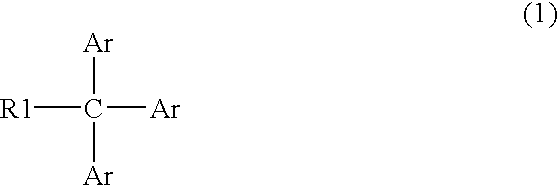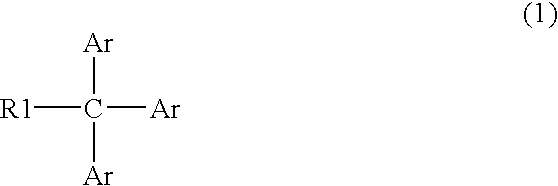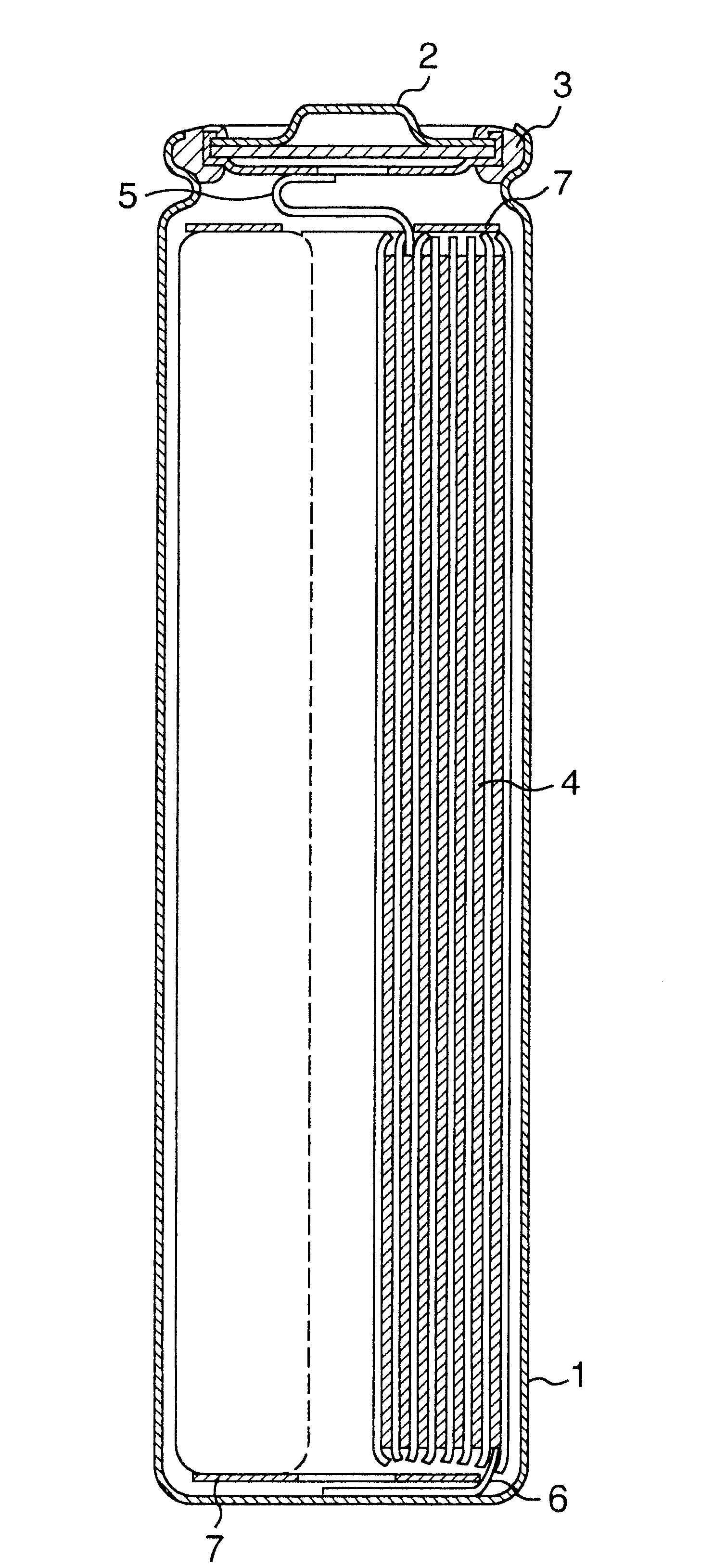Secondary battery having a non-aqueous electrolyte
a technology of secondary batteries and electrolyte, which is applied in the manufacture of non-aqueous electrolyte cells, cell components, final products, etc., can solve the problems of discharge characteristics deterioration, electrolyte leakage, and exhaustion of electrolyte, and achieve the effect of increasing internal pressur
- Summary
- Abstract
- Description
- Claims
- Application Information
AI Technical Summary
Benefits of technology
Problems solved by technology
Method used
Image
Examples
example 1
FIG. 1 is a longitudinal sectional view of a cylindrical battery used in this example. In FIG. 1, the reference numeral 1 indicates a battery case made by working a stainless steel plate having resistance to organic electrolyte, 2 indicates a sealing plate provided with a safety valve, 3 indicates an insulation packing, 4 indicates an electrode plate group, and a positive electrode and a negative electrode between which a separator is interposed are rolled a plurality of times into a spiral form and inserted in the case 1. A positive electrode lead 5 is drawn from the positive electrode and connected to the sealing plate 2, and a negative electrode lead 6 is drawn from the negative electrode and connected to the bottom of the battery case 1. The reference numeral 7 indicates an insulation ring, which is provided at the upper and lower portions of the electrode plate group 4. The positive electrode, the negative electrode, and others will be explained in detail below.
The positive ele...
PUM
| Property | Measurement | Unit |
|---|---|---|
| voltage | aaaaa | aaaaa |
| temperatures | aaaaa | aaaaa |
| temperature | aaaaa | aaaaa |
Abstract
Description
Claims
Application Information
 Login to View More
Login to View More - R&D
- Intellectual Property
- Life Sciences
- Materials
- Tech Scout
- Unparalleled Data Quality
- Higher Quality Content
- 60% Fewer Hallucinations
Browse by: Latest US Patents, China's latest patents, Technical Efficacy Thesaurus, Application Domain, Technology Topic, Popular Technical Reports.
© 2025 PatSnap. All rights reserved.Legal|Privacy policy|Modern Slavery Act Transparency Statement|Sitemap|About US| Contact US: help@patsnap.com



